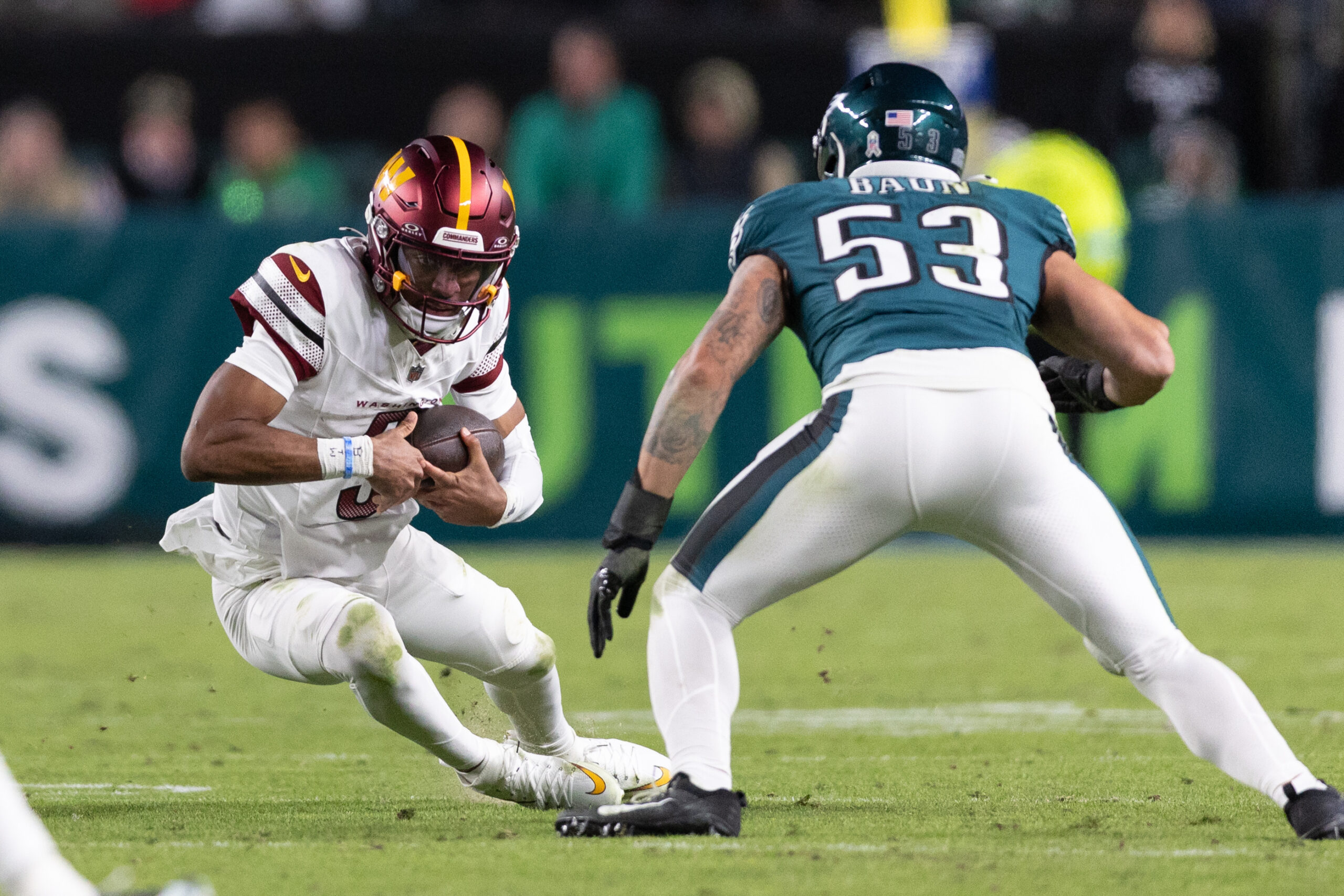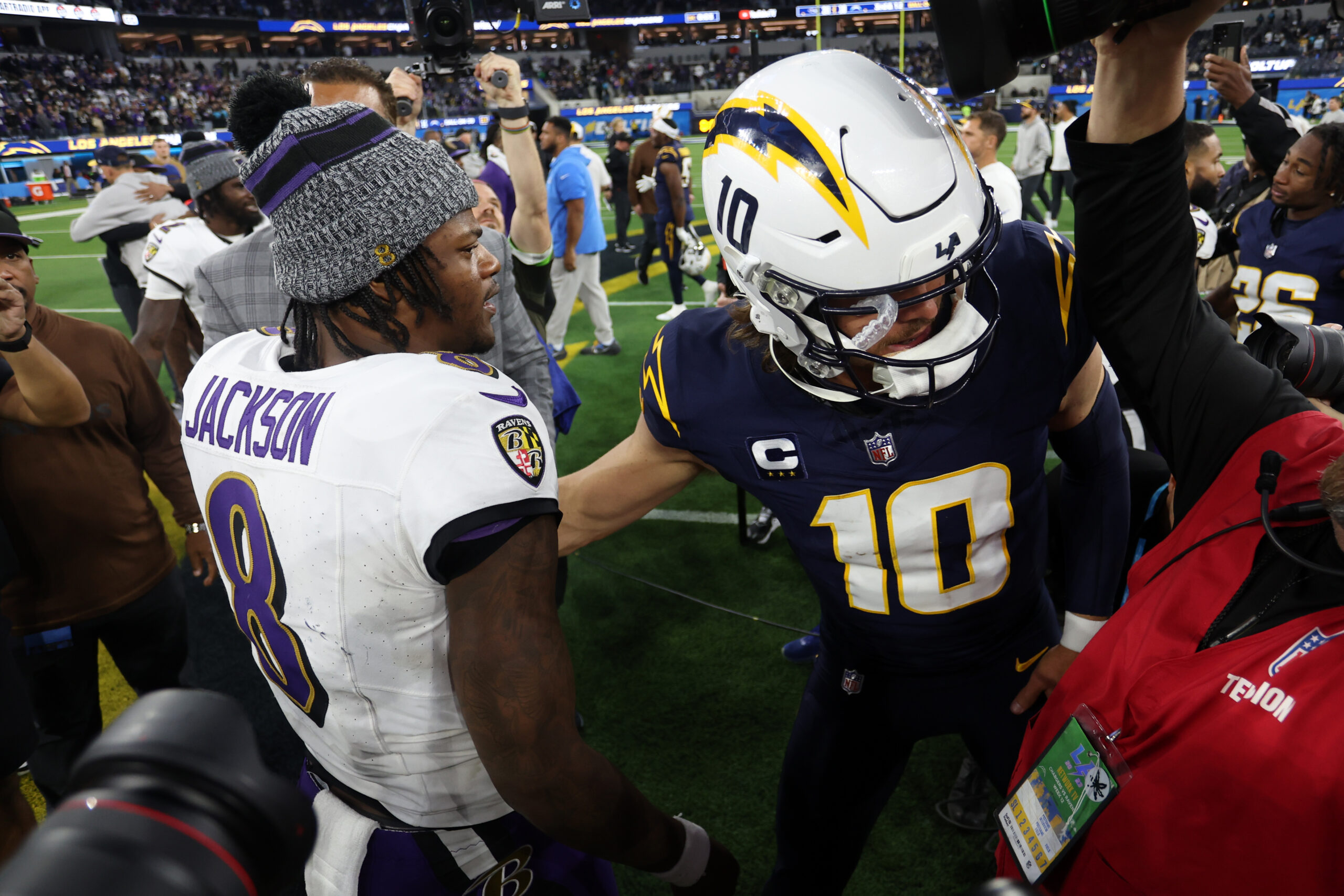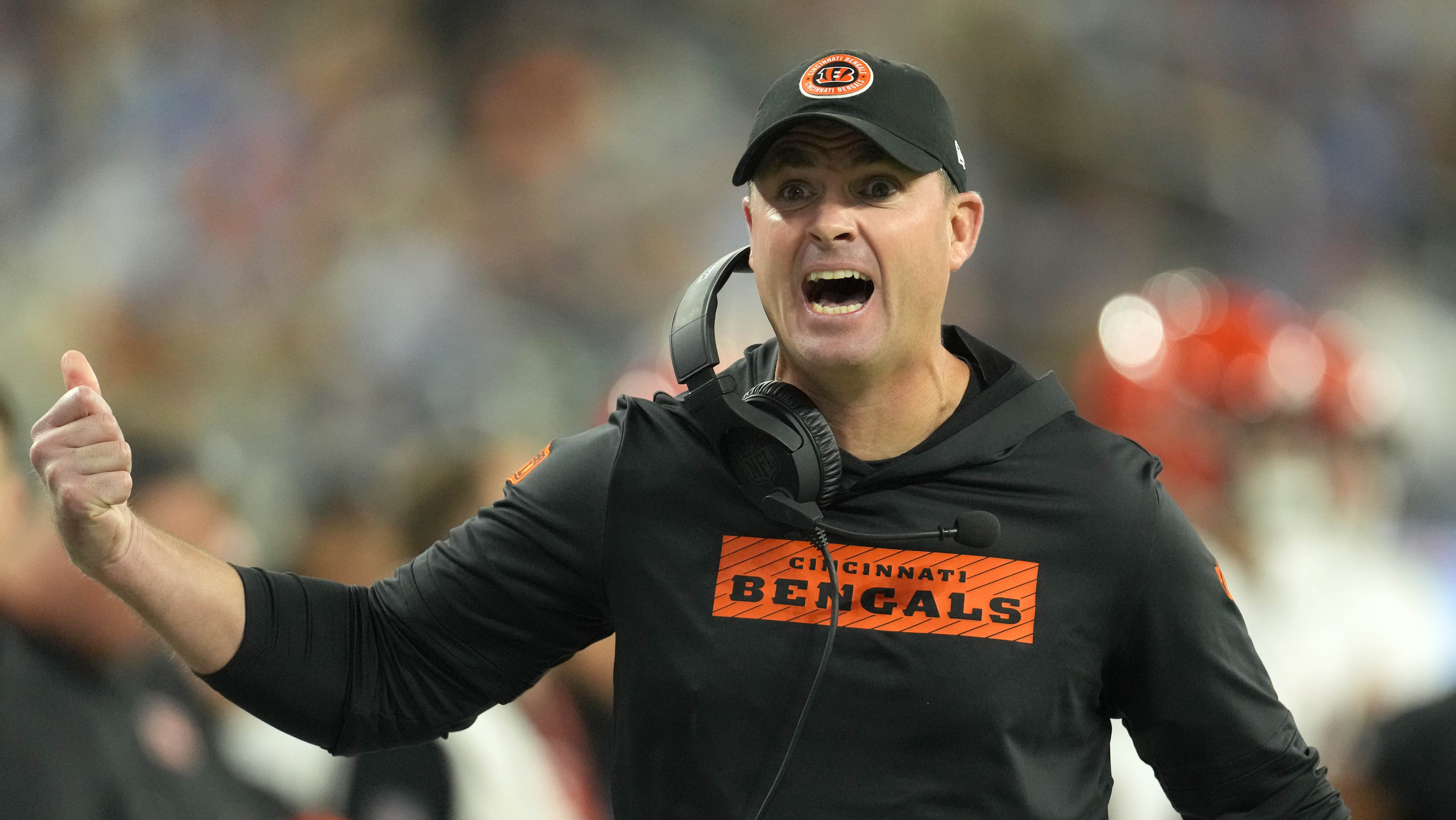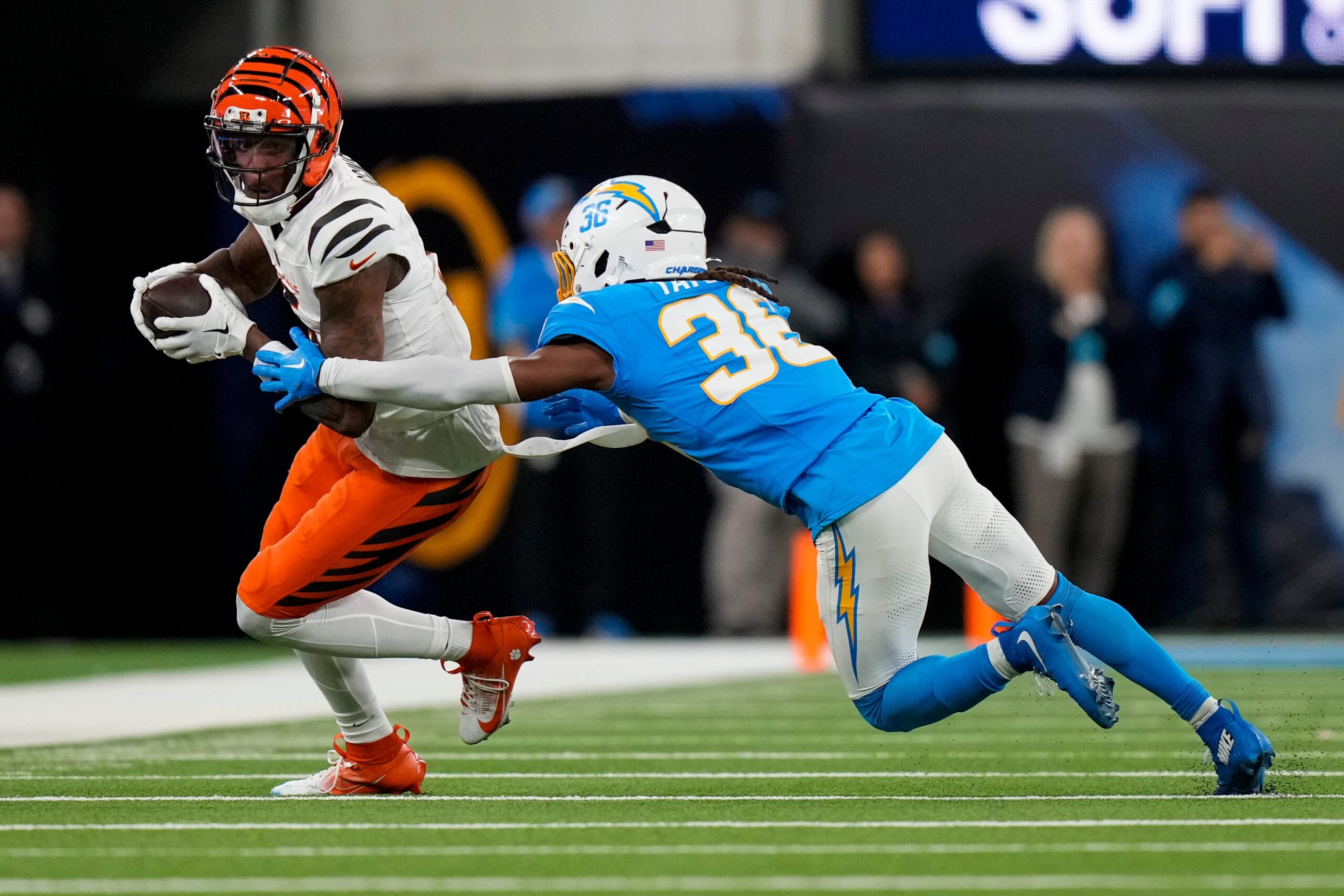NFL Analysis
6/14/24
7 min read
NFL QB Deep Dive: Jaguars' Trevor Lawrence Earned New Contract But Needs More Help

Trevor Lawrence is now the league's highest-paid quarterback. The $55 million per year average on his five-year/$275 million contract extension matches the deal given to Joe Burrow last offseason. However, the guarantees on the Lawrence deal fall a bit below Burrow’s.
The size of the deal isn’t the point or really much of a surprise. Lawrence was expected to get a new contract in an environment that just had Jared Goff make $53 million per year, with extensions upcoming for Jordan Love, Tua Tagovailoa, and Dak Prescott. The figures in his contract were always going to be big. It’s also likely that this deal could have been even bigger if the Jacksonville Jaguars had waited a year and Lawrence had a productive season after some of the other contracts were handed out.
But through three seasons, we’ve gotten an uneven look at who Lawrence is. The 2021 season was a disaster under Urban Meyer. 2022 started slow but picked up in the second half, including a playoff win in a big comeback, but the 2023 follow-up still left a lot to be desired.
Lawrence has yet to reach the expectations of the generational quarterback he was viewed as coming out of Clemson, but that might say as much about the expectations as Lawrence’s career to this point.
The Good And Bad Of Quick Passing
At the start of 2022, the Jaguars tried to run a more traditional NFL offense. Before Jacksonville’s bye, Lawrence used a zero- or one-step drop on 23.4 percent of his dropbacks and a five-step drop on 11.1 percent, per SIS. Without an explosive receiving corps and a shaky offensive line, Jacksonville found success in the quick game.
Through Week 10, Lawrence averaged 0.16 EPA per play when the ball was out within 2.5 seconds, per TruMedia. His aDOT on those throws was just 3.7.
But with some success there, the Jaguars doubled down. Lawrence’s zero- or one-step drops went up to 30.4 percent of his dropbacks, while five-step drops were cut nearly in half to 6.6 percent. Lawrence averaged 0.29 EPA per play on throws within 2.5 seconds from Weeks 12-18.
Working on something that has brought me to watching a lot of Trevor Lawrence and I am having a good time. pic.twitter.com/2vlBsr4YrY
— Dan Pizzuta (@DanPizzuta) July 5, 2023
That was supposed to be a break-glass-in-case-of-emergency strategy while the Jaguars worked around their available personnel. It was supposed to change in 2023. With a healthier offensive line and Calvin Ridley, the Jaguars should have leaned on deeper dropbacks and pushed the ball downfield at a higher rate. They did not.
The Jaguars kept to their quick passing tendencies as it became clear there still wasn’t trust in the offensive line. Lawrence was again asked to help the line by getting the ball out before pressure became an issue. In 2023, 64.4 percent of Lawrence’s pass attempts came within 2.5 seconds, a higher rate than in his 2022 season.
Jacksonville tried adding a vertical element to the quick drops, but it didn’t work.
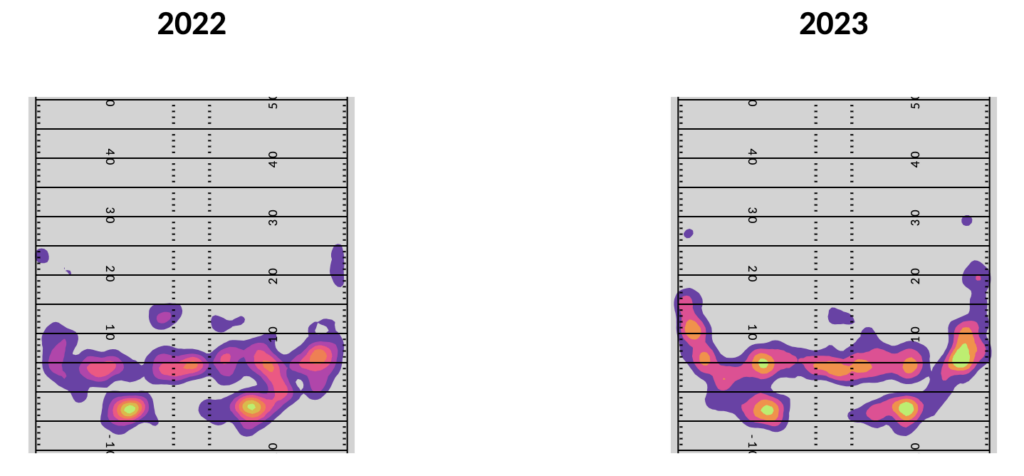
Lawrence added a yard to his aDOT on these passes as about five percent of his passes went to the intermediate and deep levels of the field, but he finished with -0.01 and just a 43.9 percent success rate.
The ideal version of this is what the Miami Dolphins do with Tua Tagovailoa. This was not that.
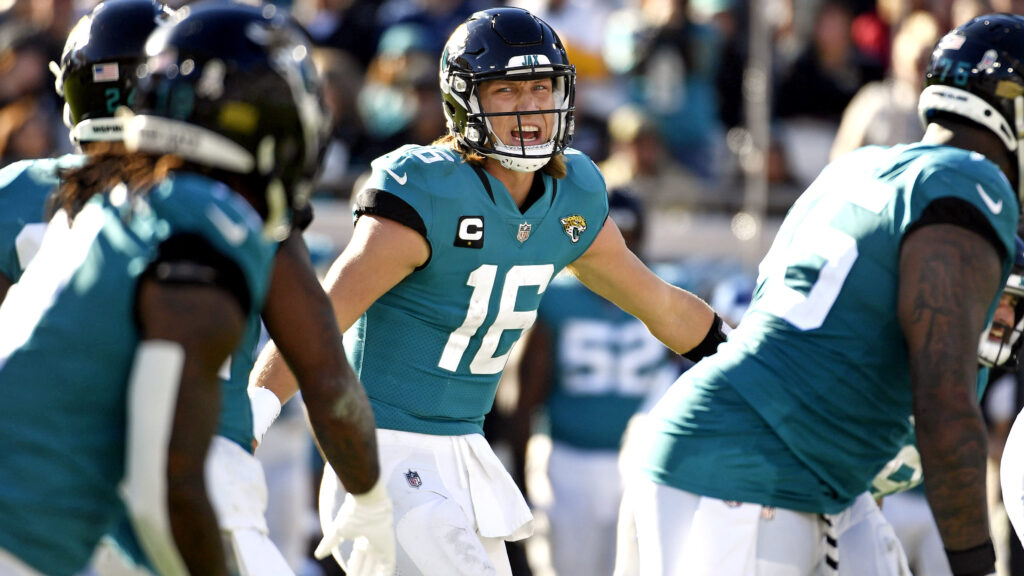
Finding Space
Even with the attempt at more vertical passing, the offense had no consistent downfield element, creating a condensed passing scheme that did not lend itself to many explosive plays. Defenses could sit on shorter passes. With the Jaguars relying on hitches and curls instead of a higher rate of crossing routes, they didn’t have enough answers to manipulate spacing and create openings for the passing game.
In 2022, Lawrence was one of the league's best intermediate passers (0.51 EPA per play and 56.6 percent success rate). That completely disappeared in 2023 with -0.06 EPA per play and a 39.3 percent success rate.
Look at the difference of what Lawrence targeted on throws between 11-19 air yards. In 2023, 27 percent of his intermediate targets went to hitches. There are no big play or run-after-the-catch possibilities when the target is coming to a complete stop to catch the ball.

Errors On Errors
If there is a trait that got Lawrence into some unnecessary trouble, it’s his tendency to overcompensate when things go wrong around him. Unfortunately, things have gone wrong.
Let’s start with drops, an issue that has plagued Jaguars receivers for Lawerence’s entire career. In 2023, 4.6 percent of Lawrence’s pass attempts resulted in drops. That only ranked 15th, but the leverage of those drops mattered from plays on third down and in the end zone.
No quarterback lost more EPA to drops last season than Lawrence.
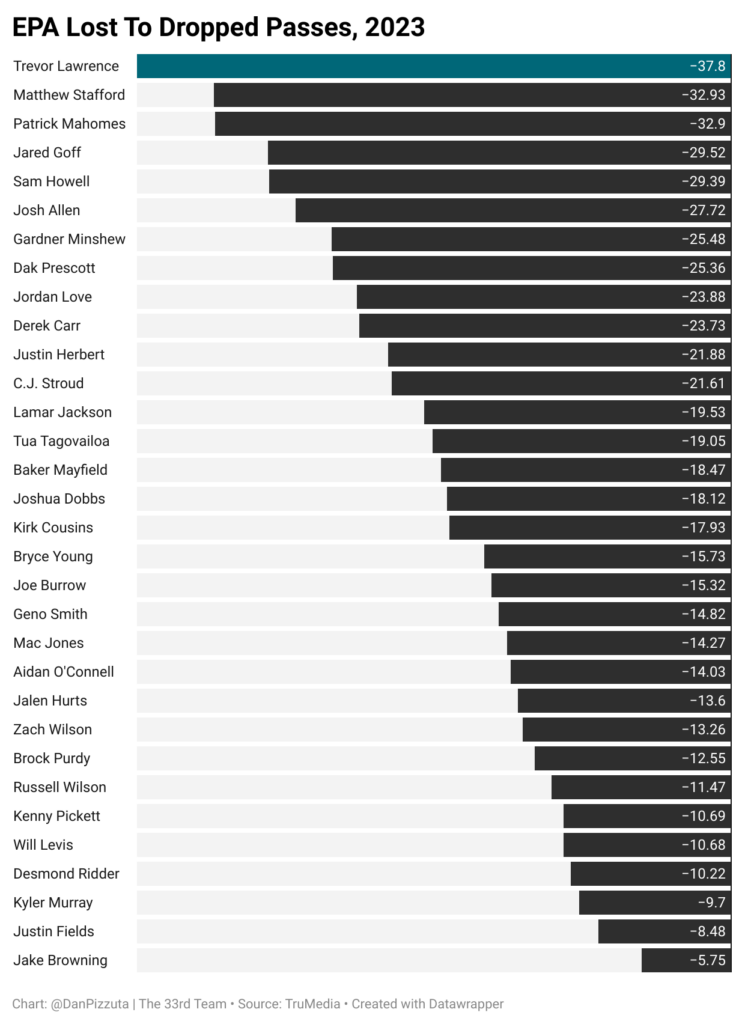
Lawrence has also run a high interception rate in two of his three seasons. Near the end of 2023, Doug Pederson deflected a question on play-calling and instead blamed turnovers for why the Jaguars could not get going on offense.
The issue is that Lawrence’s turnovers weren’t much of a problem within the structure of the offense. Lawrence had a 1.7 percent interception rate on early downs, which ranked 14th. Players with higher interception rates on first and second down include Jordan Love (1.8 percent), Tua Tagoviloa (1.8), Kirk Cousins (1.8), Patrick Mahomes (2.3), Josh Allen (2.3), and Brock Purdy (2.7).
However, on third downs, Lawrence had a 4.3 percent interception rate. We saw something similar with Dak Prescott’s interception “problem” in 2022. Lawrence’s turnovers often compensated for failures on early downs or the lack of a short-yardage run game.
This offense was 32nd in DVOA on second and short and 28th on third and short. The Jaguars also ranked 31st in adjusted line yards and 32nd in stuff rate.
When It Works
There was a three-game stretch during the 2023 season when the Jaguars opened up the offense. Jacksonville went 2-1, but Lawrence had his best stretch. More time was given to develop plays downfield, and the offense was not condensed as a result. Look at the results and how they came about compared to the rest of the season.

On deep throws, 26 percent targeted crossers compared to less than eight percent in other games. Also, go routes made up less than half of deep throws, while they were at 60 percent in other games. That helped stretch spacing vertically and horizontally, which this offense did not do often enough.
This deep crosser off play-action to Ridley went for 45 yards.
— Dan Pizzuta (@DanPizzuta) June 14, 2024
Jacksonville opened against Cincinnati with this Christian Kirk corner route as the No. 3 from empty for a 26-yard gain.
— Dan Pizzuta (@DanPizzuta) June 14, 2024
These are easy ways to create big plays and stress defenses that were uncommon in the Jacksonville offense.
Looking Forward
In theory, the Jaguars have addressed this issue in the offseason. Gabe Davis was brought in as a free agent, and Jacksonville selected Brian Thomas Jr. in the first round. Along with Kirk, that should give this offense three receivers who can stretch the field vertically.
Ridley was supposed to be that last year, too, but that role never materialized. When the trust in the offensive line crumbled, the Jaguars reverted back to the quick passing game, and Lawrence ended up being a victim of his own success from the 2022 version of that offense.
Jacksonville brought in Mitch Morse at center but committed to the rest of the line with extensions for both starting guards. If that line improves, the offense could open back up.
There’s plenty to like about what Lawrence brings to this offense, but the offense rarely allowed the quarterback to play to his full potential. He was often asked to use one of his strengths to cover up the deficiencies elsewhere.
Even with his new contract, Lawrence should provide an easy path to offensive efficiency. We’ll see if the Jaguars take it.

